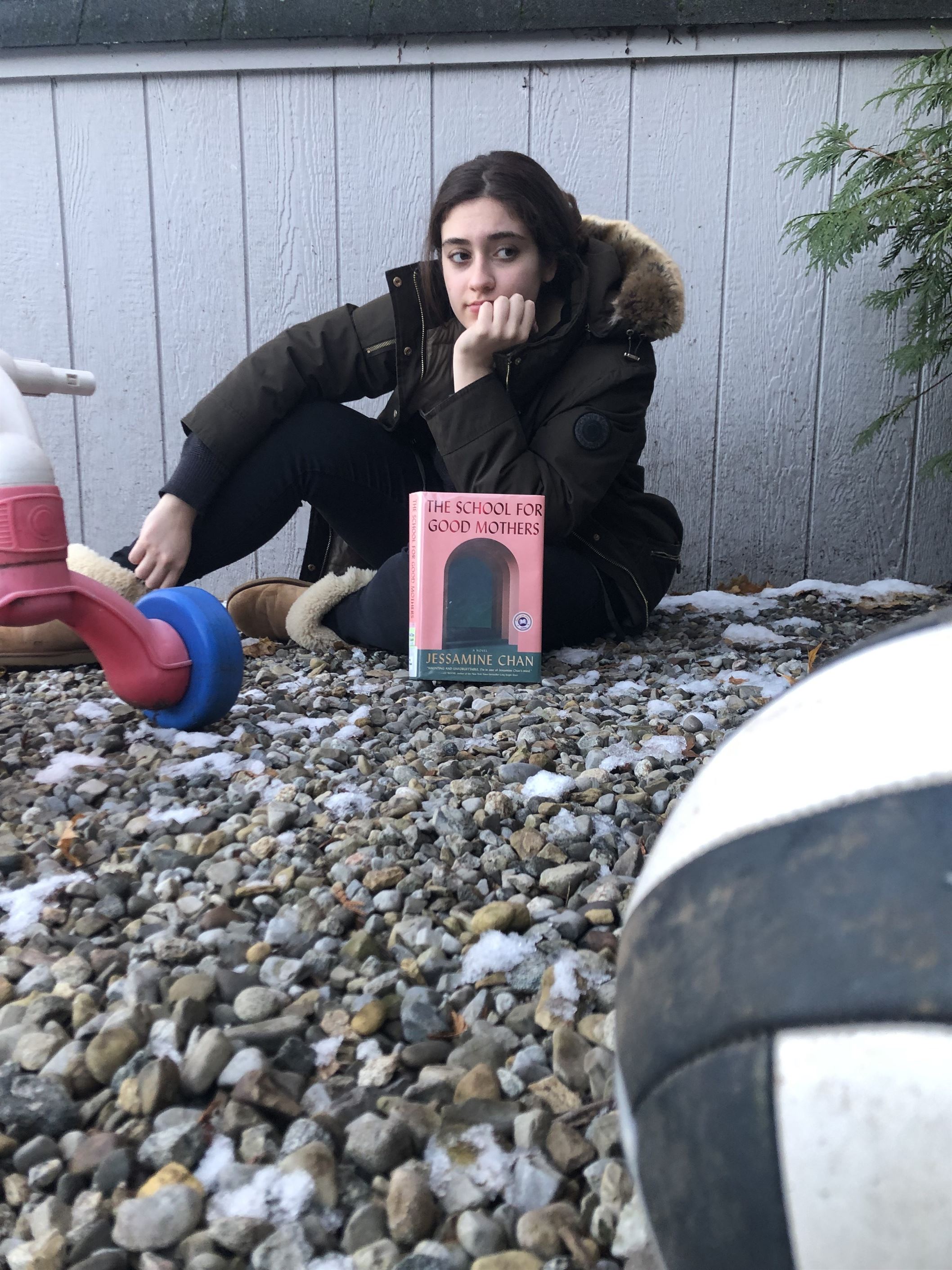Contemporary books tend to be on my summer bookshelf, but I realized I hadn’t read a 2022 book while at the shore this year.
I skimmed some titles and found my Thanksgiving read. The title was intriguing and upon seeing the synopsis, I wanted to give this “The Handmaid’s Tale”-esque book a try.
“The School for Good Mothers” by Jessamine Chan follows the 39-year-old, now-single mother Frida Liu, who’s been given an opportunity by the Child Protective Services (CPS) to affirm her proficiency in parenting by successfully completing a year at a reformation school. The women admitted to this school all share charges of neglect and/or abuse. Frida was reported by a neighbor for leaving her child unattended at home for over an hour; she left the house to grab papers from the university she works at part-time, so she can be with her daughter on the days she has custody.
Typically, I am weary of stories that are inspired by or closely mirror other successful works. They sometimes lack a unique development that fails to differentiate the character’s arc from one book to another.
However, not only did this book avoid this altogether, it introduced new angles and added further depth to the ideas and arcs “The Handmaid’s Tale” seemed to skim over.
Both stories focused on the journey of one woman and her struggles with motherhood, yet we go deep into Frida’s past and present and what she makes of it all. The theme of this book explores the juxtaposing feelings women have between motherhood and their own lives, and the constant reconciliation Frida has with her faults.
Readers will find that the line between faults as a person and faults as a mother is not clear-cut.
In this reconciliation, Frida experiences endless anguish that comes in waves, yet always seems to linger. It simultaneously numbs her from her past concerns and forces her to be in tune with the current demands. During her time in the school, she is impelled to consider what parts of you are lost, what parts are hard to regain and what perhaps was never possible as a mother.
What seemed clear enough, but is largely purified in stories about mothers, is their romantic life. Frida’s voice represents the sentiments many women probably feel as a single or co-parenting mother; the extent of loneliness and absence of validation was somewhat astonishing.
It’s especially despairing to witness how mothers attempt to reassure themselves that a child’s love is all they need yet find out that isn’t always the case.
“She misses being a wife, being half of something. Mother and child aren’t the same, though she remembers thinking, when Harriet is born, that she’d never be alone again,” Chan writes.
But the school continually assures mothers that their child’s love is all they need—that a child’s love will motivate, teach and elevate everything about a woman.
It is unusual how much the schools ask of mothers, especially considering the nature of their assessments. The school’s curriculum is largely based on the women’s interactions with their “children,” robotic children, to be precise. These androids of varying ages are paired with the mothers corresponding to their own children’s age, appearance and mannerisms.
The absurdity of mothers being expected to react to the dolls as they would their real kids understandably categorizes the story as sci-fi. However, the possibility of this becoming a reality is not completely far-fetched. There are many studies about human-computer collaboration occurring in the realm of research, not to mention right here at Montclair State University. A professor in the computer science department is currently conducting a project to see what factors affect the trust levels in humans of human-computer interaction.
For a novel classified as dystopian/science-fiction, it was certainly grounded in much realism: mainly, the reality of holding the title of “mother”.
For one, it reflects on political interpretation. Readers observe the somewhat abstract process parents undergo with CPS. Despite the child’s attachment to their parent, there is an intricate navigation of red tape that parents sometimes cannot afford or bypass altogether.
Another is the emotional and social facets of being a “mother.” A decent portion of the book is the events leading up to Frida’s admittance as she watches her daughter enjoy the perfect life her ex-husband and his new, younger wife have created. Still, she bitterly yet verily accepts that her daughter does have another family, one that loves her very much, despite the numerous ways she feels they overshadow her.
Amidst all that seems to discourage her, there is a potent, true “motherese” that Frida and the rest of the mothers possess.
That is the fact she is her biological mother, and that is a union no one can ever replicate.
Not all mothers have what is considered the “instinct” to nurture and ennoble their children, but the basic feeling of loving their child is something all mothers experience in different capacities.
In concluding my thoughts, my receptivity to contemporary books is renewed. This book has captured the innermost thoughts of a role that is so highly applauded only if the product of the labor is deemed above satisfactory. It is a story about navigating the lifelong struggles that have always been present with motherhood.
Admittedly, the review did not cover all the social, cultural and emotional investigations the book consists of (all of which did in fact, carry equal weight throughout the story). Nonetheless, I can attest that “The School for Good Mothers” truly offers a multifaceted interpretation of motherhood that certainly leaves you in awe of its continual sacrifice, forgiveness and healing.



